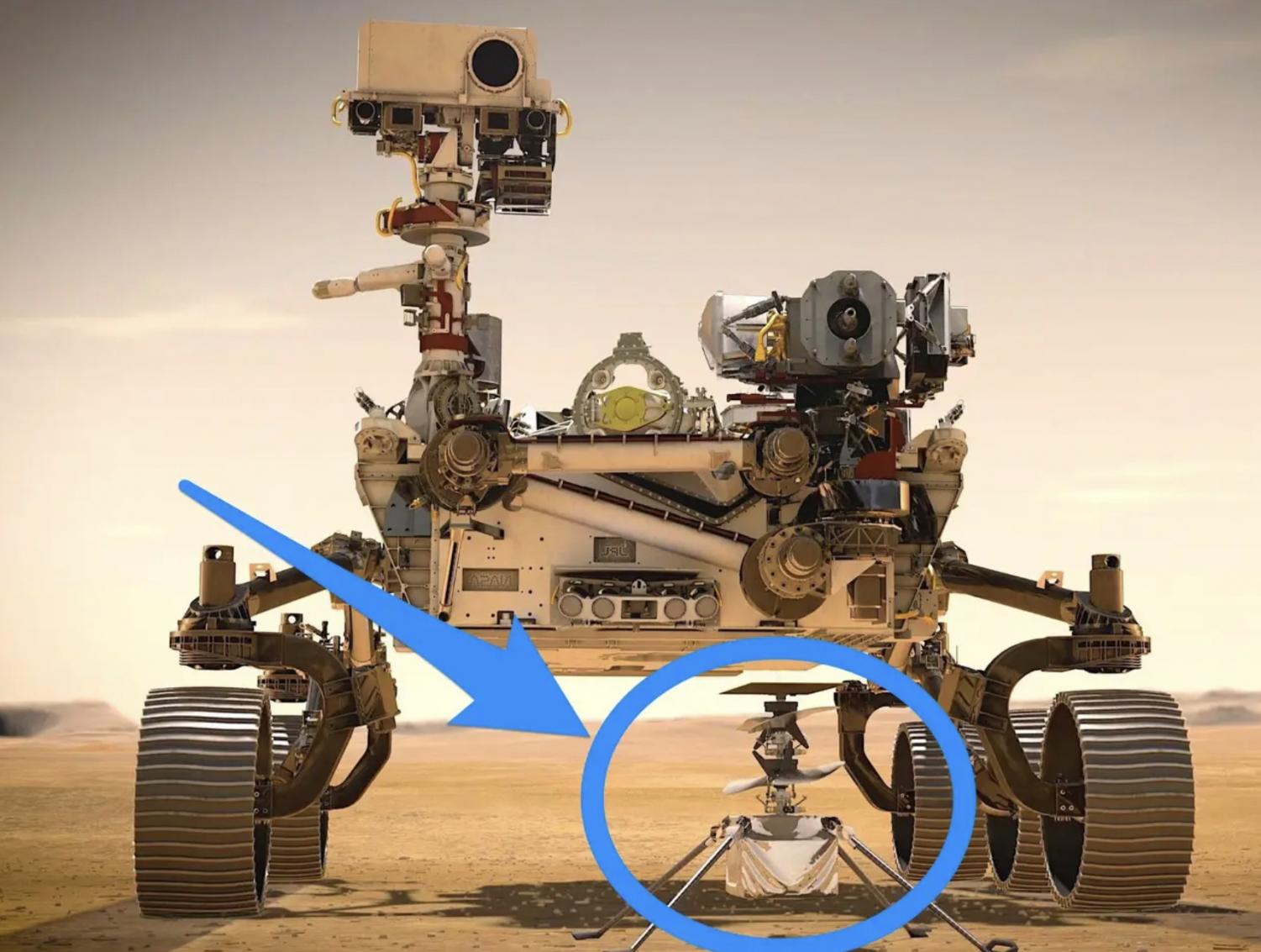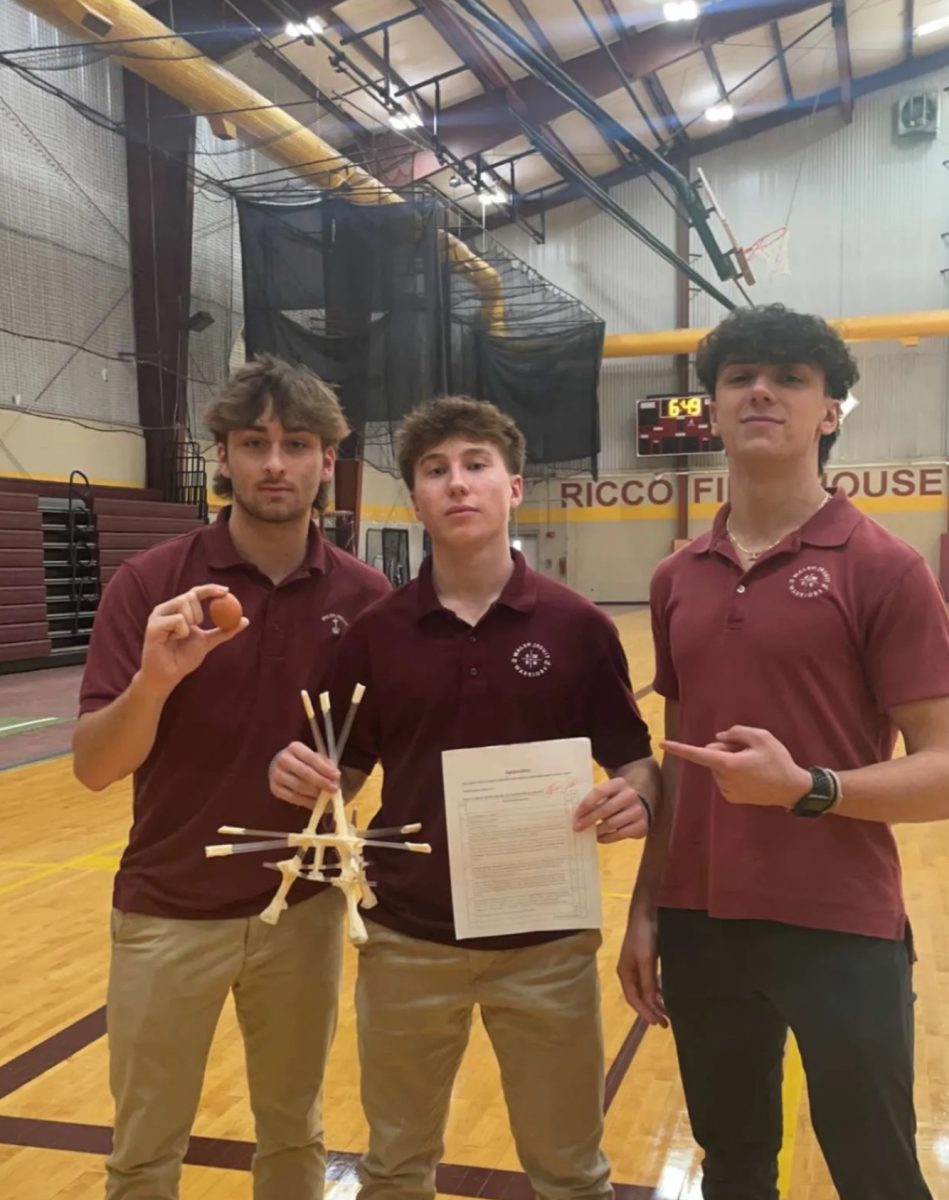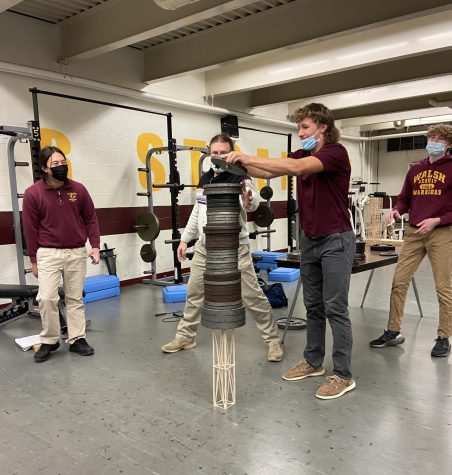NASA’s Ingenuity makes history on Mars
May 16, 2021
Ingenuity, NASA’s Mars helicopter, made world history on Monday, April 19, as the first powered, controlled flight on another planet. The phenominal accomplishment is important because now NASA will be able to discover and collect new information from Earth’s nearest neighbor which is, on average, a “mere” 140 million miles away.
Junior Michael Siegrist, reflecting after seeing NASA’s video, said, “It was beyond cool to just think that I can see and hear a helicopter on another planet. Humans made this, got it to Mars, and the fact that flight is still possible so far from Earth is amazing!”
“The ability to fly wherever you want, at great speed, for a closeup view without risk of damage from collision or fall, is a thrilling capability,” said Alan Duffy, a professor of astrophysics at Swinburne University in Australia. The helicopter being able to explore more efficiently will change space exploration for the future.

Scientists want to further their knowledge and exploration of Mars for several reasons. Nadia Drake, writing in National Geographic states, “Over the last century, everything we’ve learned about Mars suggests that the planet was once quite capable of hosting ecosystems—and that it might still be an incubator for microbial life today.”
It can be very difficult to fly in Mars’s atmosphere due to lack of air molecules to push against. Kenneth Chang from the New York Times notes, “Flying in the thin atmosphere of Mars was a particularly tricky technical endeavor, on the edge of impossible because there is almost no air to push against. NASA engineers employed ultralight materials, fast-spinning blades and high-powered computer processing to get Ingenuity off the ground and keep it from veering off and crashing.”
Many might be wondering how exactly the helicopter performed on Mars. “For the first flight, the helicopter took off, climbed to about 10 feet (3 meters) above the ground, hovered in the air briefly, completed a turn, and then landed. It was a major milestone: the very first powered flight in the extremely thin atmosphere of Mars, and, in fact, the first such flight in any world beyond Earth,” according to NASA.gov.
Science teacher Ms. Miranda Burley stated, “Being able to explore a different planet off the ground provides a more practical and efficient way of exploration compared to a Land Rover.” Since the helicopter is elevated off the ground, it can maneuver without any hindrance that it would face on land.
Mr. David Burnside, who teaches physics and is involved with the robotics club at Walsh Jesuit, was impressed by this astonishing achievement. He said, “It is impressive how NASA was able to hover Ingenuity from such a long distance away. NASA had to predict and make corrections during flight due to the time delay because Mars is hundreds of millions of miles away.”











Lisa Baylor • May 21, 2021 at 9:03 am
You have a lot of great resources mentioned and quoted in this article. This is definitely an important news worthy event, Thanks for sharing with those who may not have noticed how important this event is.